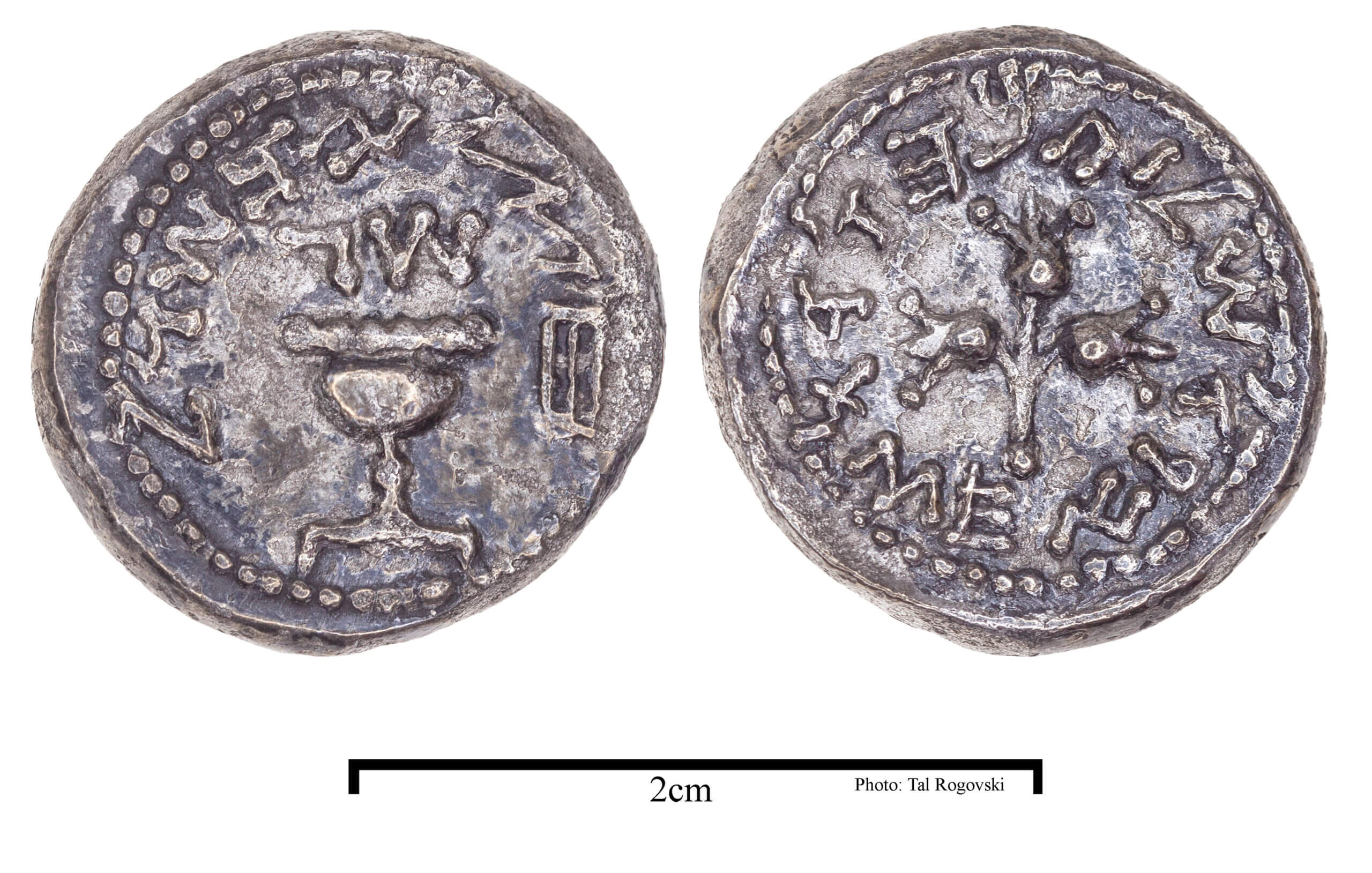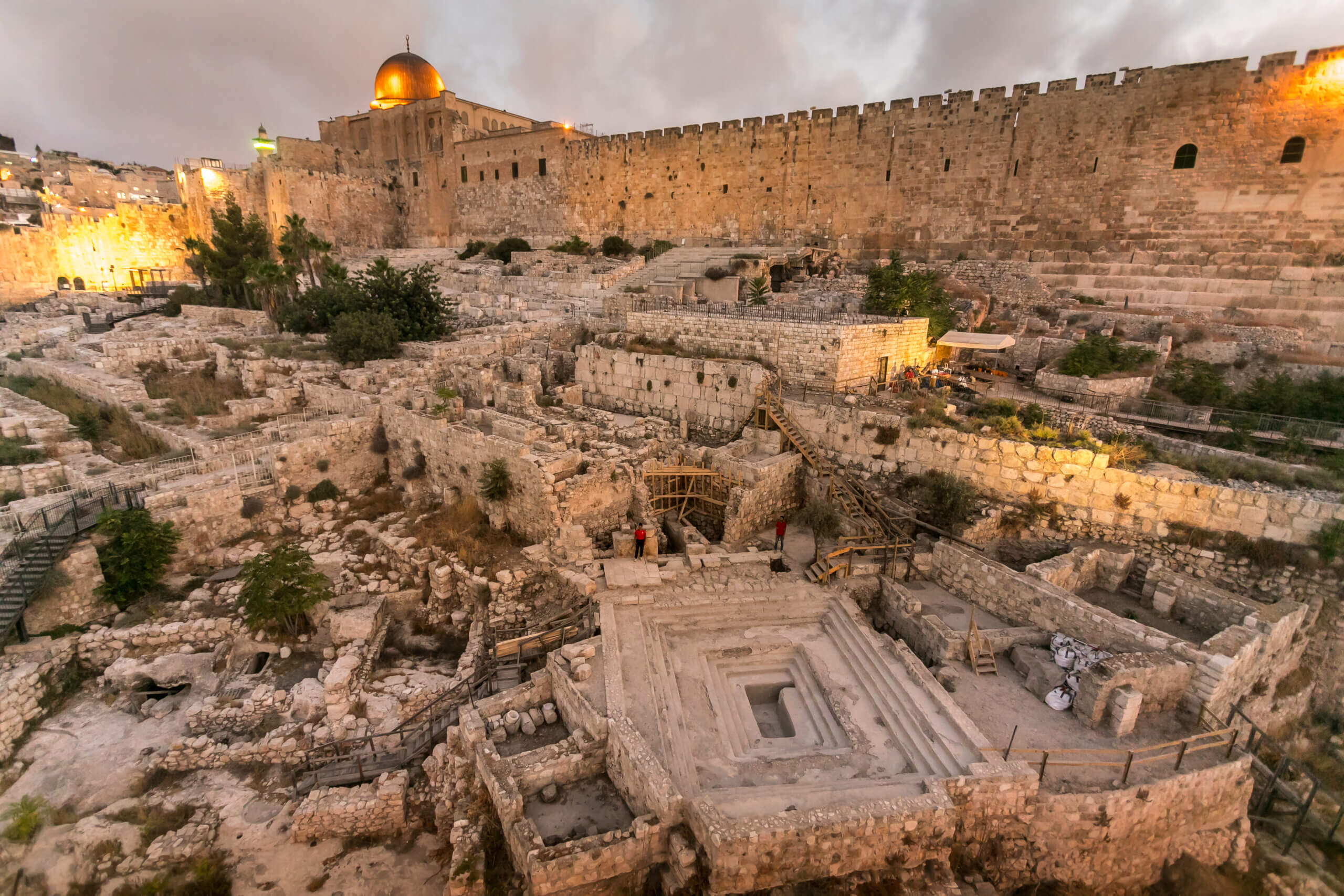This is the third coin of this type to be discovered in excavations in Jerusalem and one of the few ever discovered in archaeological excavations.

In recent excavations in Ofal, south of the Temple Mount, the remains of a magnificent public building from the time of the Second Temple, which was destroyed in 70 CE, were uncovered. Within the layer of destruction, dozens of Jewish coins from the time of the Great Revolt against the Romans (66-70 CE) were discovered, most of them made of bronze. Unusual and especially rare is a silver coin worth half a shekel from the third year of the revolt, which was found among the coins - one of the few of its kind ever discovered in excavations. The excavations were conducted by a delegation from the Hebrew University led by Prof. Uzi Liebner from the Institute of Archaeology, in cooperation with Armstrong College from Oklahoma in the USA, and with the assistance of the government company for the development of East Jerusalem, the Antiquities Authority and the Nature and Parks Authority.
During the Great Revolt against the Romans, the Jews in Jerusalem minted bronze and silver coins. On most of the silver coins there is a cup on one side - and above it, in the letters of the ancient Hebrew script, the year of the rebellion in which it was minted, and around the cup an inscription: 'Israeli shekel', 'half shekel' or 'quarter shekel', depending on the value. On the other side appears a branch with three pomegranates and around it an inscription: 'Holy Jerusalem', also in ancient Hebrew script. The recently found rare coin was identified by Dr. Yoav Farhi, Numismatist of the Expedition and Curator of the Kadman Museum of Coins at the Moza, the Eretz Israel Museum in Tel Aviv. "This is the third coin of this type discovered in excavations in Jerusalem and one of the few discovered in archaeological excavations in general", shared by Prof. Liebner.
The minting of the coins during the rebellion, especially those made of silver, constituted a political statement and an expression of national liberation of the Jewish rebels against the Roman rule, since in the Roman period the authority to mint silver coins was vested in the emperor. Indeed, throughout the Roman period until the Great Revolt, no silver coins were minted by Jews at all, not even in the days of King Herod the Great.

According to the researchers, the 'half shekel' coins, whose average weight was 7 grams, were also used to pay the 'half shekel' to the temple - a tax for the worship expenses paid annually by every adult male. "Until the uprising, they used to pay the half shekel tax in the high-quality silver coins that were minted in the city of Tire in Lebanon, and are known as the 'Turrian shekel' and the 'Turrian half shekel,'" explains Dr. Farhi, and elaborates: "On the surface of these coins appeared the image of Heracles-Melkerat , the main god of Tyre, and on their backs an eagle appeared and around it an inscription in Greek - '[of] Tyre, the Holy One and a City of Refuge'". In fact, the silver coins of the rebels were therefore also intended to serve as a substitute for the Syrian silver coins, both in the inscriptions they bore and in the fact that they bore symbols and not figures, in accordance with the second commandment. The researchers conclude that "the silver coins of the Great Revolt were the first and the last in antiquity to bear the name 'shekel'. The next time was on the Israeli shekel coins issued by the Bank of Israel in 1980."
More of the topic in Hayadan:

One response
First, an interesting disclosure; Second, it is not a secondary drowning but a primary-original drowning, and from this an interesting conclusion will emerge in connection with the rebellion and the matter of sacrifice; Thirdly, I would be careful, to say the least, in the use of a modern, somewhat charged word, of "national aspect", because nationalism, with its multitude of components and interpretations, its foundations, is firmly rooted in Europe from the mid-19th century onwards.